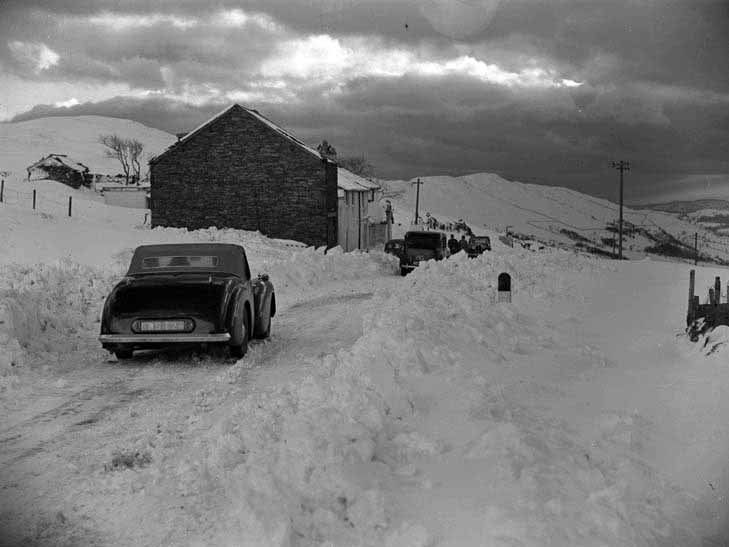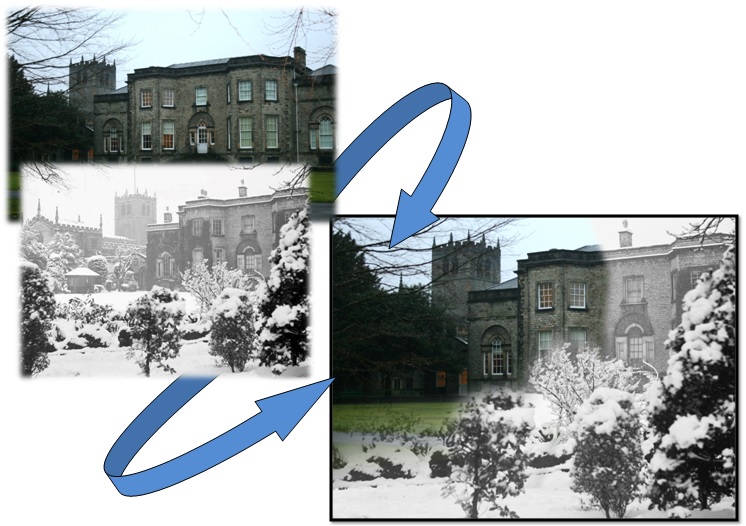
January 15, 2014, by Alexander Hall
Bringing archival images to life
Alongside collecting all of our participants’ written and oral memories relating to snow and winters past in Cumbria, the Snow Scenes team have been busy exploring how these memories relate and connect to archival records. It was whilst conducting part of this archival research that I came across the Cumbrian photographer Joseph Hardman and his amazing collection of Lakeland photography held at the Museum of Lakeland Life and Industry (MOLLI).
Joseph Hardman (1893-1972) moved to Kendal, Cumbria in 1911 from the metropolis of Manchester, and it was here he developed an amateur interest in photography. Encouraged by the sale of a few of his photographs to local newspapers, in the early 1930s Hardman made the leap and became a professional freelance photographer. Covering up to two hundred miles a week, usually by taxi, Hardman documented changing landscapes, local events, personalities and regional traditions. Hardman’s vast collection of photographs shows he had a deep understanding of the landscape of the region. Fortunately for us here at the Snow Scenes project, his interest in the seasons and agricultural calendar mean his collection contains hundreds of photographs that feature snow and winter life in the region from the 1930s through to the 1960s.
Over recent years staff at the MOLLI have painstakingly worked through Hardman’s 5000 glass negatives, donated in 1972 by his widow, and digitised the collection, making the images available in the public domain via their online photo library. Unfortunately, when the collection was donated to the museum, Hardman’s notes were not in tow, and so the 5000 glass negatives arrived with very little accompanying information, such as dates or details of location and subject. Enthused by the 500+ photographs that featured snow or winter scenes, I wanted to help the MOLLI in adding further information to their collection, whilst also using Hardman’s images to generate discussion amongst project participants.
So, upon my next research trip I decided that I would try and locate where some of the winter images in the Hardman collection were taken. However, I decided that I didn’t want to just roughly locate where the images depict, but rather, I wanted to try and locate the exact spot from where Joseph Hardman had taken the photographs some fifty or so years earlier. On this trip, I managed to find and photograph some 5 or 6 locations from original Hardman photos. Upon returning home I decided to experiment using digital editing software to merge and blend the original images with my new digital photographs of the locations.

The process of creating the composite images.
Abbot Hall, Kendal as seen in Hardman’s collection and today before being merged into one image.
The results were fascinating and I was struck by the landscape changes this exercise revealed. In an exact reversal of my expectations, many of the buildings, walls, fences and human artefacts in the shots had barely altered, and it was in fact the non-built environments that had changed the most. Obviously things had grown, but more than this, hedges had disappeared, field uses had changed, and plantations had come and gone.
For me the changes highlighted by these composite digital images reflected wider changes in Cumbrian life and some of the tensions faced by communities in the region. The images made me question the role of national parks in conserving an environment and ponder on how physical changes in land-use have been connected to changing economic and social dimensions of communities.
After my initial success I continued to locate further images, photograph them and blend the now and then shots together. In doing so I begin experimenting with some of the many archival photographs that contain people. Many of Hardman’s photographs feature a single figure or groups of people surrounded by breathtaking Lakeland views. These shots, often depicting people at work or play, add a haunting element to the composite images I have created. The figures in the images, such as those playing ice hockey below, again emphasise the change that has occurred in the region over the last century, their clothing, demeanour and activities, at odds with the world we are familiar with today.
I hope you have enjoyed this introduction to the digital composite images I have created for the Snow Scenes project, a forthcoming blog-post will go into more detail on how the project is planning to use these images. The Snow Scenes team strongly encourages readers to take a look at the Hardman Photo Library and if you recognise any locations or people in the images, or think you can date any of them, please do get in touch with James Arnold at the MOLLI.
Fourteen of the images will be on display in the cafeteria at the Museum of Lakeland Life and Industry from 17th January – 22nd March 2014. Framed prints of the composites can also be purchased at the museum, with 50% of proceedings being donated to the MOLLI.
No comments yet, fill out a comment to be the first


Leave a Reply